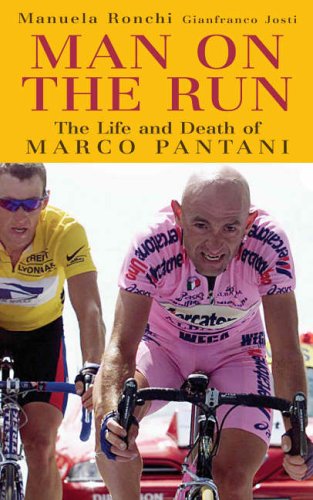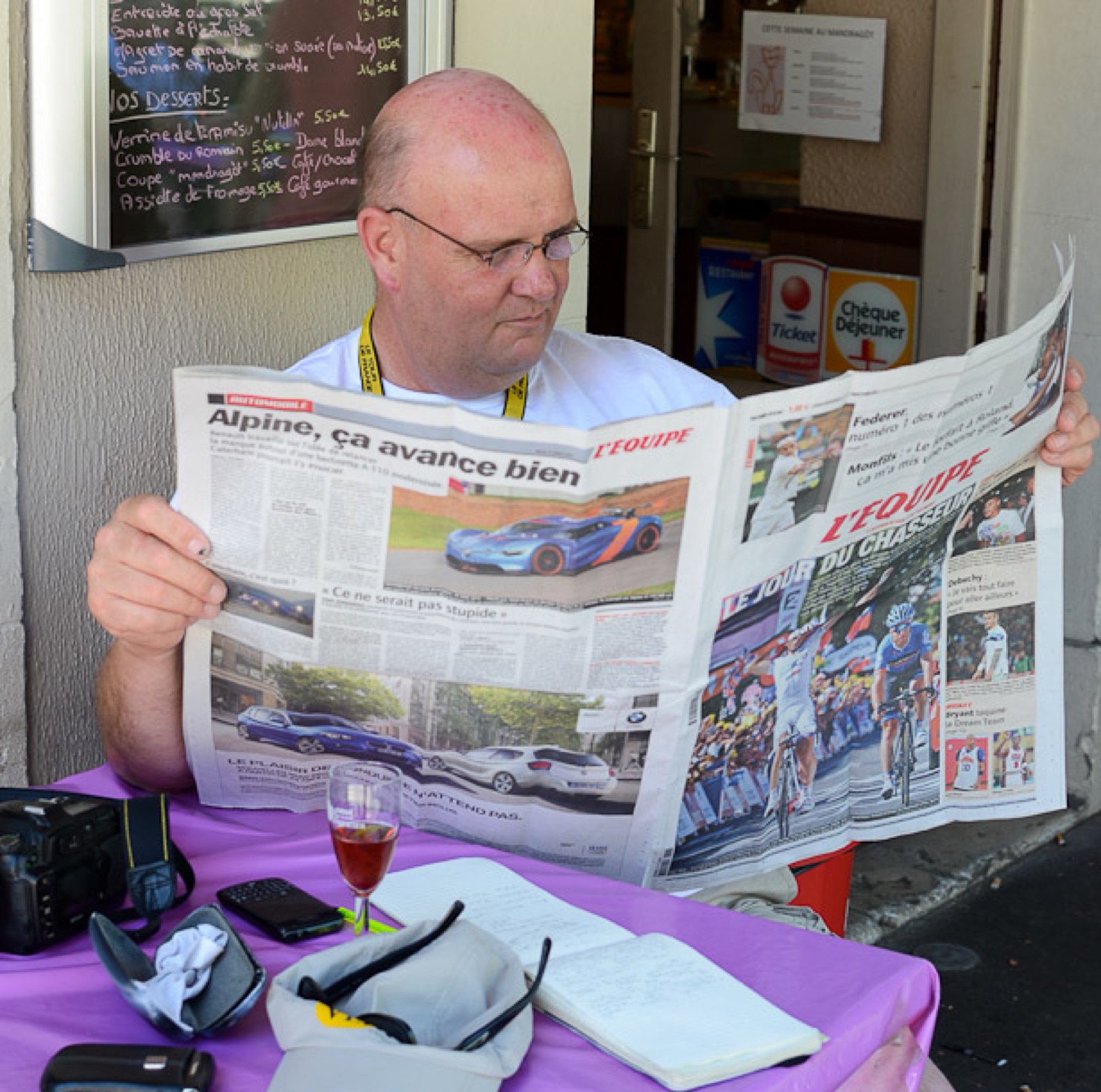“Man on the Run” by Manuela Ronchi is the story of the last few years of Marco Pantani’s life.
The title works on two levels: after being slung out of the Giro D’Italia race on the penultimate day on a charge of suspected EPO use, whilst leading by a long way, Marco was hounded by demons – insecurity, shame, confusion, betrayal, distrust – all the way through a terrible cocaine addiction to his demise of an overdose.

In addition, Manuela [or Man(u)], his personal manager, tried everything in her power to help him restore firstly his self-esteem and motivation, and laterly his will to live.
Chasing Marco around Europe, baby-sitting him to prevent self-harm, and collecting him from wherever he ended up, meant that Manuella devoted a large part of her life to him, which he definitely appreciated, but all too often challenged, in the way that an errant child will challenge his parents.
It’s a desperately sad tale: Marco was let down by fair-weather friends, by long-time sponsors and by money-driven hangers-on.
Most of all however, Marco was let down by cycling. Let’s be honest, there is still a massive problem with doping in cycling – and indeed in pretty much all professional sport – in the week where Roberto Heras is positive following his 4th Vuelta D’Espana win, it is still difficult to believe that top riders are achieving their palmares on muesli and spring water.
It’s akin to speeding on the motorway – most people do it, and you’re only guilty if your caught. Still, the way that the Italian press and judiciary hounded Marco was astonishing, and certainly led to his frightful depression, which in turn forced him to seek an escape in cocaine, rather than training and dignity.
Marco saw his depression as the problem and his addiction as a symptom, but over the years these roles reversed, and Marco became heavily dependent upon the drugs and incapable of functioning normally for any length of time.
The book is very well written, and seems to spare no details. However, whilst much is made of that terrible day when Marco failed his blood tests, and his determination that there was a conspiracy behind it, it’s noticable that there isn’t a resolute denial either.
In many ways, in this story, it’s not important. What is clear from reading it, is that once you start to dabble in drugs, you may think you’re in control, but sooner or later, it’ll control you. A harrowing, sad, heart-rending read.
Pick something else from: the Bookshelf.



